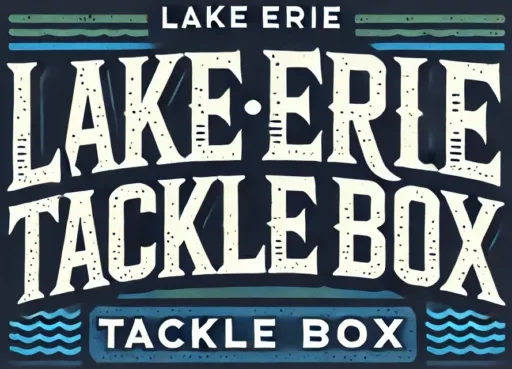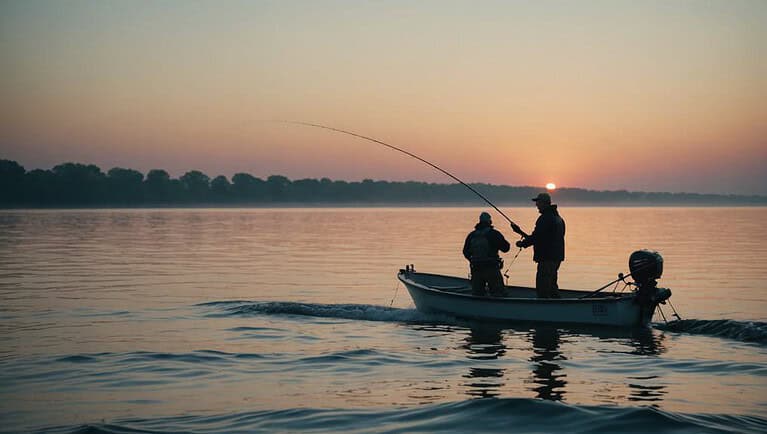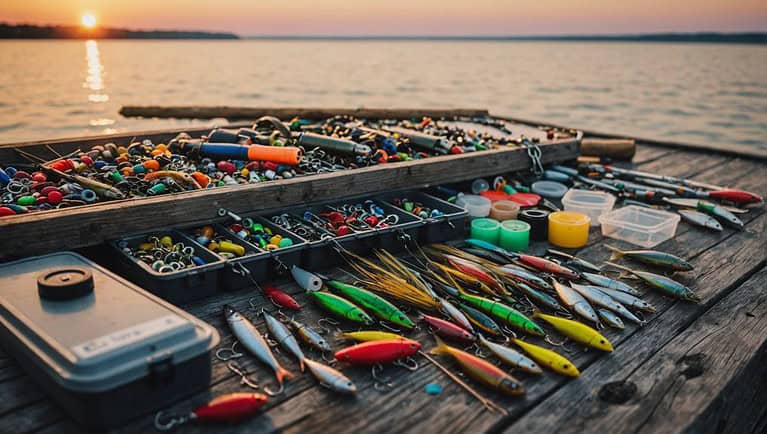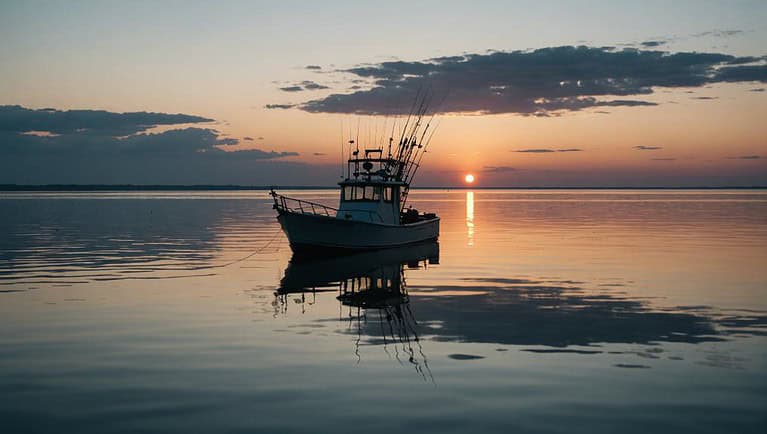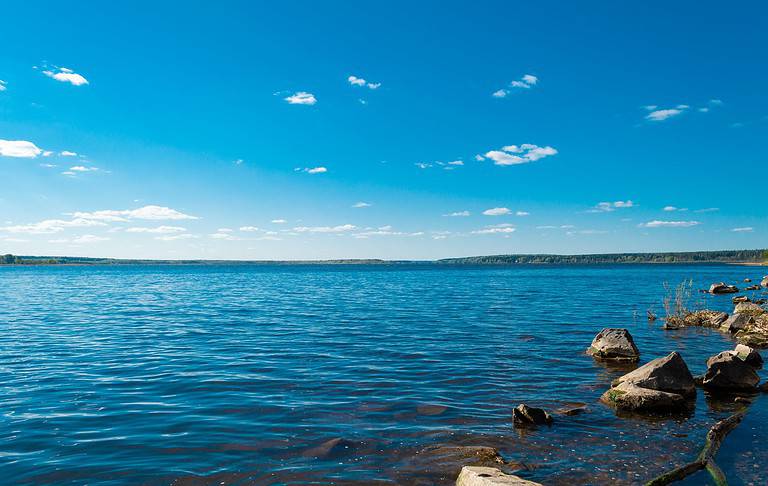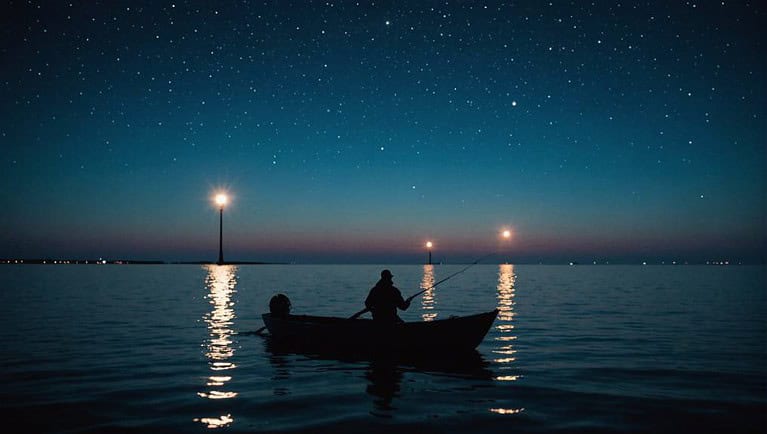Lake Erie Steelhead Fishing: A Comprehensive Guide for Anglers

Begin an unforgettable fishing adventure in Lake Erie, where you’ll find top-tier steelhead fishing. Equip yourself with a 6- to 8-weight rod, and choose patterns like egg patterns and streamers for the best results. Target these fish during their peak seasonal migration from October onward. Steelhead prefer water temperatures between 45-55°F and are highly active when the water levels rise. Drift fishing in tributaries like Cattaraugus Creek and Clear Creek is especially effective. For an even greater experience, consider hiring a guide. You’re just scratching the surface of what you need to know for a successful trip.
Main Points
- Use a 6- to 8-weight rod with a 9-foot, 1x tapered leader for fly fishing.
- Fish during peak months, targeting tributaries like Cattaraugus Creek and Chautauqua Creek.
- Match fly patterns to prevalent food sources like aquatic insects, baitfish, and crustaceans.
- Hire a local guide for expert advice and increased chances of success.
- Consider staying in Springville or Ellicottville for convenient access to top fishing spots.
Choosing the Right Gear

Selecting the right gear is essential for a successful Lake Erie steelhead fishing adventure. When fly fishing, you’ll want a 6- to 8-weight outfit paired with a 9-foot, 1x tapered leader and a fluorocarbon tippet. This setup gives you the strength and flexibility needed to handle these powerful fish. Fly patterns play an important role in your success. Popular choices include egg patterns, nymphs, and streamers, each mimicking the steelhead’s natural prey and triggering strikes.
Don’t forget to adjust your strike indicator depth based on the current rate and the weight of your fly. This adjustment ensures that your fly patterns drift naturally through the water, increasing your chances of a bite. When a steelhead takes your streamer, lift the rod quickly to set the hook.
For those who prefer spinning gear, a 7-foot medium action rod combined with a 4000 size spinning reel is highly effective. Use 8- to 12-pound test monofilament and pair it with a 20-pound test fluorocarbon leader. This setup provides the sensitivity and strength needed to handle aggressive steelhead.
With the right gear, you’ll be well-prepared for an exhilarating day on Lake Erie.
Understanding Steelhead Behavior
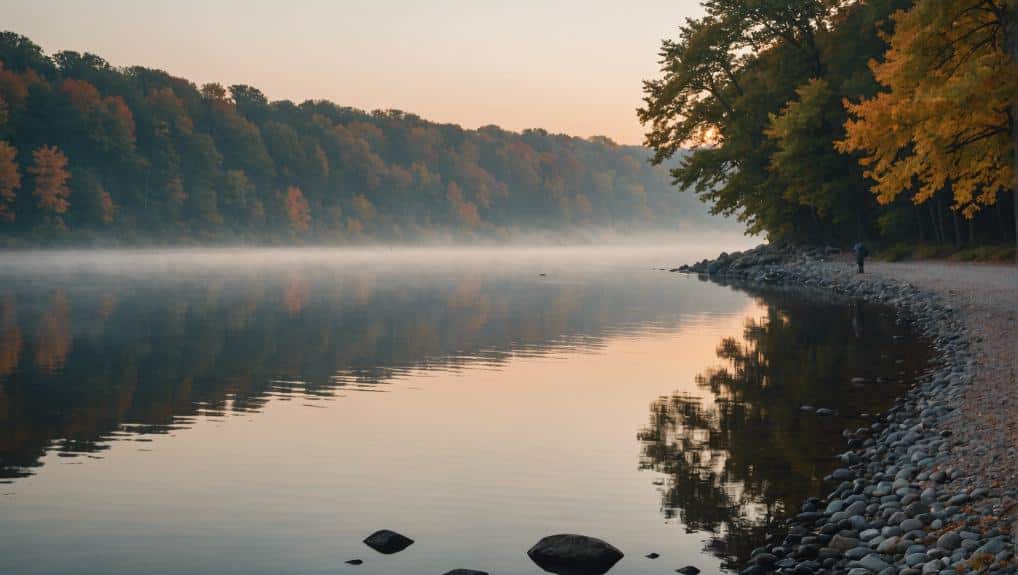
To catch steelhead in Lake Erie, you need to understand their seasonal migration patterns, preferred water conditions, and feeding habits.
These fish start their journey up the tributaries from October through April, responding to changes in weather and water levels.
Knowing when they’re most active and what they eat can make all the difference in your fishing success.
Seasonal Migration Patterns
Understanding the seasonal migration patterns of steelhead in Lake Erie is key to mastering the art of fishing for these elusive and dynamic fish. These patterns start to take shape in October, when steelhead begin their ascent into Lake Erie’s tributaries. This migration occurs in multiple waves, with the fish moving upstream to spawn through April. Recognizing these waves can greatly enhance your fishing strategy.
Stocked steelhead spend about two years maturing in Lake Erie before their instinctual urge to return to the tributaries kicks in. During this time, they grow stronger and more resilient, making your catch all the more thrilling. As the spawning season approaches, male steelhead become territorial and aggressive, providing a unique opportunity to test your skills against these feisty fighters.
Fishing in the fall or winter is particularly effective because it coincides with the peak period of the stocking program. This is when you’re most likely to encounter a high concentration of steelhead in the tributaries. By understanding these migration patterns, you can better plan your fishing trips and increase your chances of a successful catch.
Preferred Water Conditions
As you track the seasonal migration patterns, it’s equally important to understand how water conditions influence steelhead behavior for a successful fishing outing. Steelhead prefer cooler water temperatures, ideally between 45-55°F, which makes them more active and willing to feed.
Pay attention to these temperature ranges to increase your chances of encountering these magnificent fish.
During higher water levels and flows, steelhead exhibit more enthusiastic behavior. The increased current oxygenates the water and stirs up food sources, making steelhead more eager to bite.
Conversely, on bright, sunny days, you’ll find them retreating to deeper pools and runs, seeking refuge from the light. Look for these deeper areas to maximize your fishing success.
Overcast days and light rain are your best friends when fishing for steelhead. These conditions can trigger heightened activity and feeding, as steelhead feel more secure and less exposed to predators.
Understanding how weather and water conditions affect steelhead behavior can greatly improve your fishing experience.
Feeding Habits
When targeting steelhead, recognizing their opportunistic feeding habits is key to increasing your catch rate. Steelhead are known for consuming a variety of aquatic insects, baitfish, and crustaceans. Understanding these habits means knowing their preferences for specific food sources like salmon eggs, sculpins, and nymphs.
Steelhead feeding behaviors vary based on water temperature, flow rate, and seasonal conditions. Matching your fly patterns to these prevalent food sources can greatly improve your success in fly fishing. Adjusting your presentation techniques depending on the current conditions is also essential.
Here are some tips to keep in mind:
- Monitor water temperature: Steelhead feeding activity can increase or decrease with temperature changes.
- Observe water flow: Faster currents might require different fly presentations compared to slower waters.
- Seasonal patterns: Recognize that steelhead feeding preferences change with the seasons.
- Match the hatch: Use fly patterns that resemble the prevalent food sources in the water.
- Consider water clarity: Clear water conditions might necessitate more natural-looking flies, while murky waters allow for brighter, more noticeable patterns.
Effective Fishing Techniques
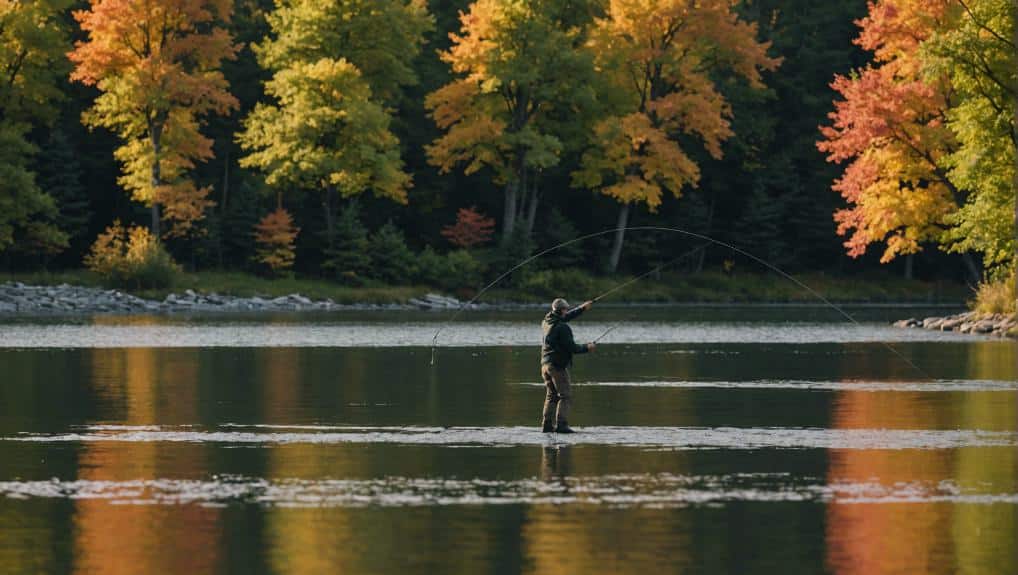
To catch Lake Erie steelhead, you’ll need to master drift fishing and choose the right fly patterns. Streamers and wooly buggers in various colors, along with drifting egg patterns and large nymphs, are highly effective.
Don’t forget to adjust your strike indicator depth and lift the rod on the take to maximize your success.
Drift Fishing Basics
Drift fishing, a favored method among anglers, lets you present bait or lures naturally by allowing them to glide along the current, mimicking the organic flow of food in Lake Erie’s tributaries. When you’re targeting steelhead, this technique can be incredibly effective. Start by using a proper drift fishing setup—this typically includes a strike indicator, weighted rigs, and adjusting your depth according to the water conditions.
To maximize your success, consider these essentials:
- Strike Indicators: These help you detect subtle bites from steelhead.
- Weighted Rigs: Make sure your bait or fly gets down to the fish’s level.
- Depth Adjustment: Continuously adjust based on water depth and speed.
- Egg Sacs and Nymphs: These are highly effective baits for enticing strikes.
- Streamers: These mimic larger prey and can provoke aggressive hits.
Drift fishing with a fly rod can be particularly rewarding. When using flies, you can present nymphs and streamers naturally in the current, which often results in more bites.
Combining drift fishing with either fly fishing or spinning gear allows you to cover a wide range of conditions, making it a versatile and productive approach for Lake Erie steelhead.
Effective Fly Patterns
Mastering drift fishing sets the stage for selecting the most effective fly patterns, which can make all the difference in your Lake Erie steelhead fishing success.
Streamers and wooly buggers are a must-have in your arsenal. Opt for colors like white, olive, black, and yellow to mimic the local forage. These patterns are particularly effective when you lift the rod on the take, guaranteeing a solid hook set.
Drifting egg patterns and large nymphs are also highly recommended for targeting steelhead in Lake Erie tributaries. Steelhead are particularly attracted to egg patterns, as they resemble the eggs of other fish species in the area, making them an irresistible snack.
When drifting these patterns, use a 6- to 8-weight fly outfit paired with a 9-foot, 1x tapered leader and a fluorocarbon tippet. This setup offers the right balance of strength and finesse.
Adjust your strike indicator’s depth based on the current rate and weight to ensure your fly drifts naturally. This subtle adjustment can greatly improve your chances of hooking a steelhead.
With the right fly patterns and techniques, you’ll be well on your way to a successful day on Lake Erie.
Seasonal Timing Tips
When planning your Lake Erie steelhead fishing trips, timing your outings with the seasonal runs from October through April can greatly enhance your chances of success. During these months, steelhead ascend the tributaries in waves, creating prime fishing opportunities.
The New York Department of Environmental Conservation (DEC) stocks these waters, making fall and winter especially rewarding seasons.
To maximize your catch, consider these effective techniques:
- Drift egg patterns and large nymphs: These mimic the natural food steelhead seek during their ascent.
- Adjust strike indicator depth: Tailor it to the current rate and weight to make sure your bait is at the right depth.
- Lift the rod on the take: When using streamers, this technique can effectively hook the fish.
- Monitor water temperature: Steelhead are more active in cooler water, so adapt your timing accordingly.
- Fish during lower light conditions: Early mornings, late evenings, and overcast days can increase your chances.
Each of these tips leverages the seasonal behavior of Erie steelhead to improve your fishing success.
Best Fly Patterns
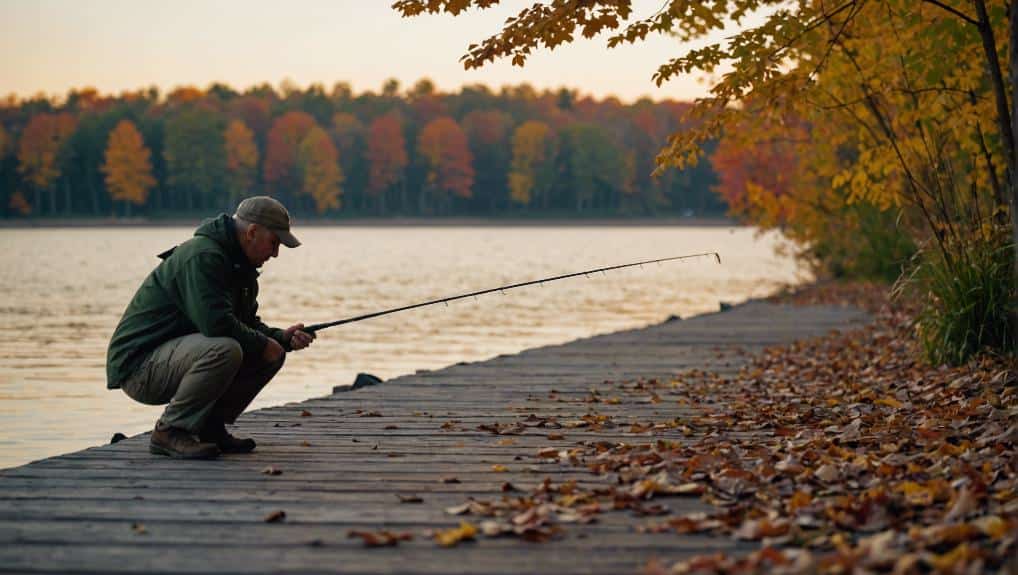
Choosing the right fly patterns, such as streamers, wooly buggers, egg patterns, and large nymphs, can significantly enhance your chances of landing steelhead in Lake Erie’s tributaries. Streamers and wooly buggers, in particular, mimic the baitfish and aquatic insects that steelhead naturally feed on. Opt for colors like white, olive, black, and yellow, as these hues are known to attract steelhead effectively.
When fishing these Erie tributaries, you’ll want a 6- to 8-weight fly outfit, paired with a 9-foot, 1x tapered leader and fluorocarbon tippet. This setup ensures you can cast your fly patterns with precision and handle the strong runs of steelhead. Egg patterns and large nymphs are especially productive during the spawning season, imitating the steelhead’s natural diet.
Adjust your strike indicator depth according to the current rate and weight of your fly. This helps keep your fly in the strike zone, increasing your chances of a bite.
When using streamers, remember to lift the rod on the take to set the hook effectively. By selecting the right fly patterns and using the appropriate tackle, you’ll be well on your way to a successful steelhead fishing adventure in Lake Erie.
Ideal Fishing Conditions
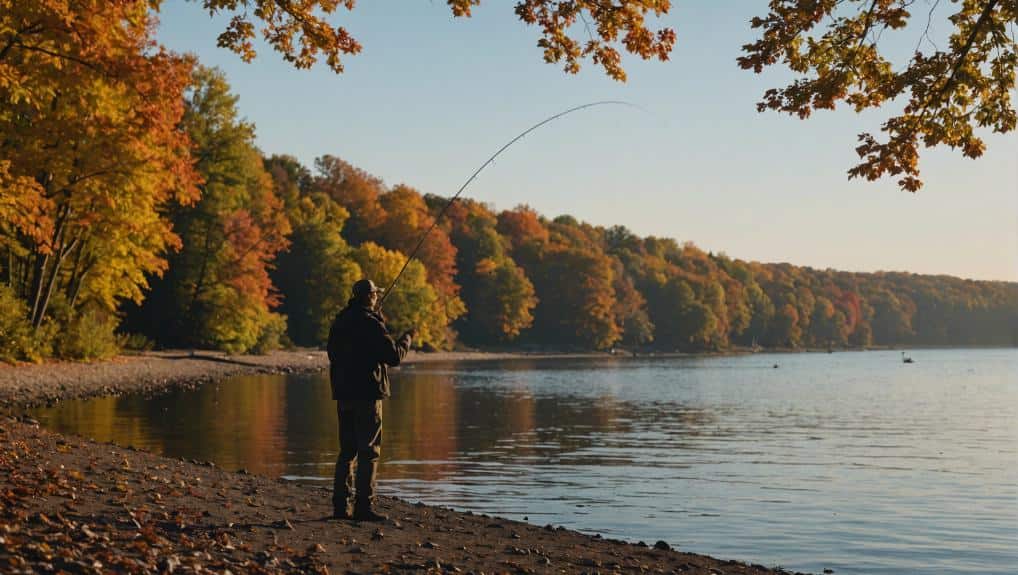
For the best steelhead fishing experience in Lake Erie, target the tributaries during the peak months of fall and winter when the fish are most active and abundant. Steelhead begin their ascent in waves from October through April, making these months prime time for anglers. Male steelhead become particularly territorial and aggressive during spawning, providing an exciting challenge.
The DEC stocks over 230,000 steelhead annually across nine major tributaries, ensuring a robust population. These stocked steelhead spend around two years in Lake Erie before returning to the tributaries, offering consistent fishing opportunities. To make the most of your trip, consider hiring a Guide Service, as they can provide local expertise and increase your chances of success.
Here are some tips to enhance your steelhead fishing experience:
- Monitor water temperatures: Steelhead are more active in cooler waters, typically between 40-55°F.
- Check water levels and flow: Peak conditions occur after rain, when water levels rise and attract fish upstream.
- Use the right gear: Medium-action rods and strong lines are ideal for handling these powerful fish.
- Pay attention to weather: Overcast days with light rain often yield the best results.
- Hire a Guide Service: Their expertise can greatly improve your fishing experience.
Top Fishing Spots

Finding the top fishing spots for steelhead on Lake Erie can greatly enhance your chances of landing a trophy catch. One of the most popular locations is Cattaraugus Creek in Springville, N.Y. Known for its abundant steelhead population, this creek draws anglers from all over. If you’re targeting this area, consider staying in nearby towns like Springville or Ellicottville, which offer convenient accommodations.
Don’t overlook other tributaries like Spooner Creek, Clear Creek, and Chautauqua Creek. These spots also provide excellent fishing opportunities for those looking to explore more of what Lake Erie has to offer.
Hiring a guide can be a game-changer, especially if you’re unfamiliar with these waters. Guides can take you to the best spots and share valuable local knowledge.
When Cattaraugus Creek isn’t fishable, feeder creeks can serve as ideal alternatives. These smaller waterways often hold just as many fish and can offer a more secluded experience.
Conclusion
You’ve got the gear, know the steelhead’s secrets, and have the techniques and fly patterns down.
Picture yourself casting a perfect line under a golden sunrise, the water shimmering like liquid silver.
With ideal conditions and knowledge of the top fishing spots, you’re set for an unforgettable adventure on Lake Erie.
So grab your rod, head to the water, and let the magic of steelhead fishing unfold.
Tight lines and happy fishing!
